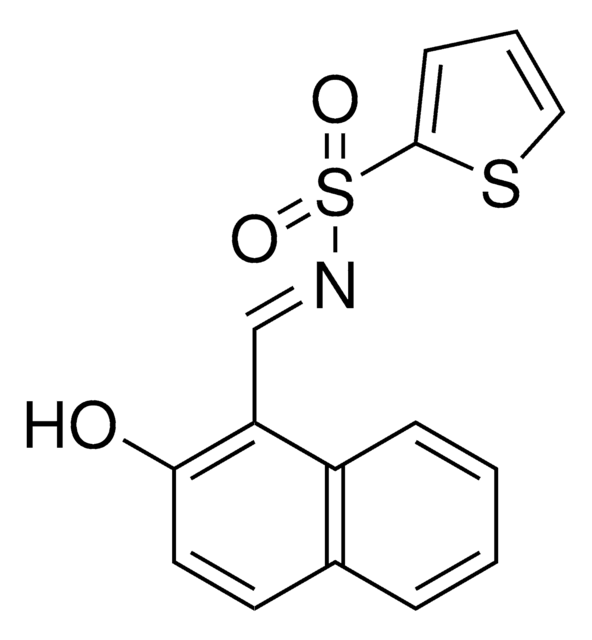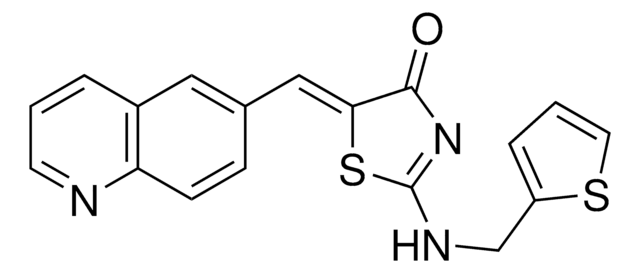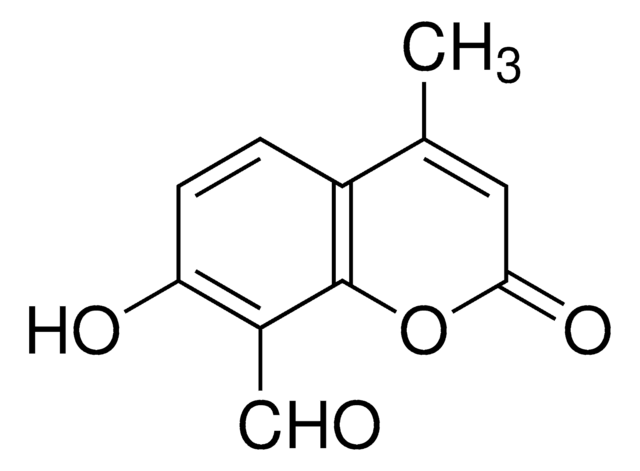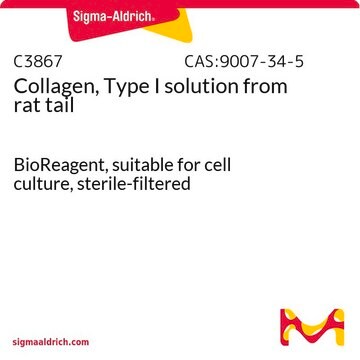412512
IRE1 Inhibitor III, 4μ8C
IRE1 Inhibitor III, CAS 14003-96-4, is a cell-permeable. Covalent inhibitor of IRE1 RNase activity (IC₅₀ = 550 and 45 nM, respectively, with 0 & 16 min preincubation in RNA cleavage assays).
Sinónimos:
IRE1 Inhibitor III, 4μ8C, 8-Formyl-7-hydroxy-4-methylcoumarin, 7-Hydroxy-4-methyl-2-oxo-2H-chromene-8-carbaldehyde, ER-to-Nucleus Signaling 1 Inhibitor III, Inositol-Reguiring Protein 1 Inhibitor III
About This Item
Productos recomendados
Quality Level
assay
≥95% (HPLC)
form
powder
manufacturer/tradename
Calbiochem®
storage condition
OK to freeze
protect from light
color
yellow
solubility
DMSO: 25 mg/mL
shipped in
ambient
storage temp.
2-8°C
SMILES string
O=C(C=C1C)OC2=C1C=CC(O)=C2C=O
InChI
1S/C11H8O4/c1-6-4-10(14)15-11-7(6)2-3-9(13)8(11)5-12/h2-5,13H,1H3
InChI key
RTHHSXOVIJWFQP-UHFFFAOYSA-N
General description
Biochem/physiol Actions
IRE1
Packaging
Warning
Reconstitution
Other Notes
Legal Information
Storage Class
11 - Combustible Solids
wgk_germany
WGK 3
flash_point_f
Not applicable
flash_point_c
Not applicable
Certificados de análisis (COA)
Busque Certificados de análisis (COA) introduciendo el número de lote del producto. Los números de lote se encuentran en la etiqueta del producto después de las palabras «Lot» o «Batch»
¿Ya tiene este producto?
Encuentre la documentación para los productos que ha comprado recientemente en la Biblioteca de documentos.
Los clientes también vieron
Nuestro equipo de científicos tiene experiencia en todas las áreas de investigación: Ciencias de la vida, Ciencia de los materiales, Síntesis química, Cromatografía, Analítica y muchas otras.
Póngase en contacto con el Servicio técnico











